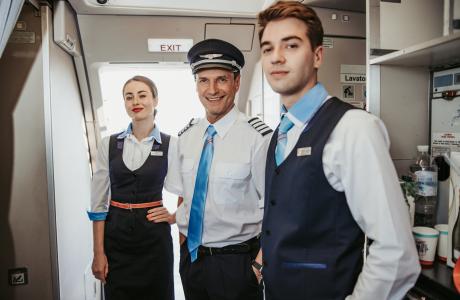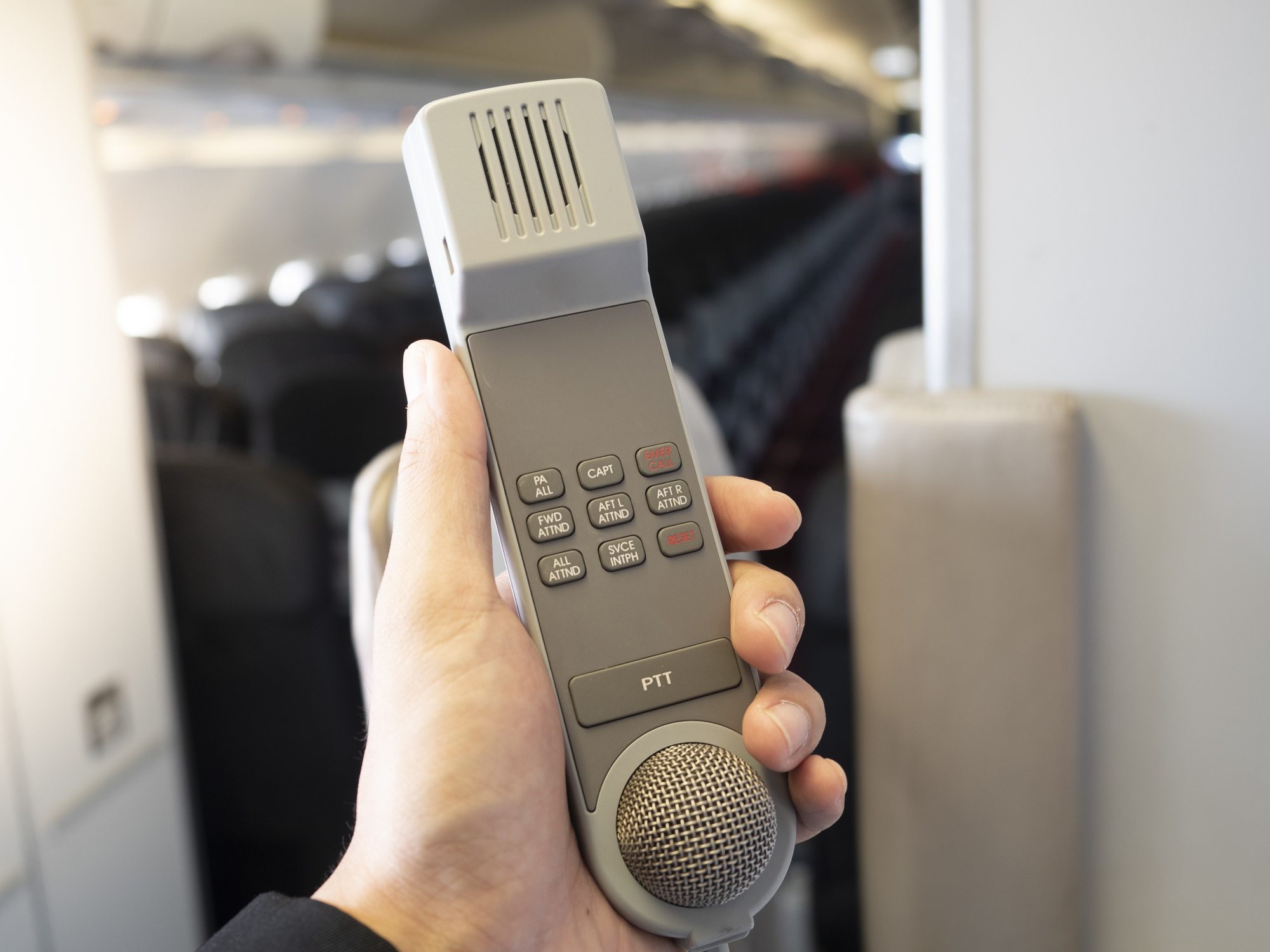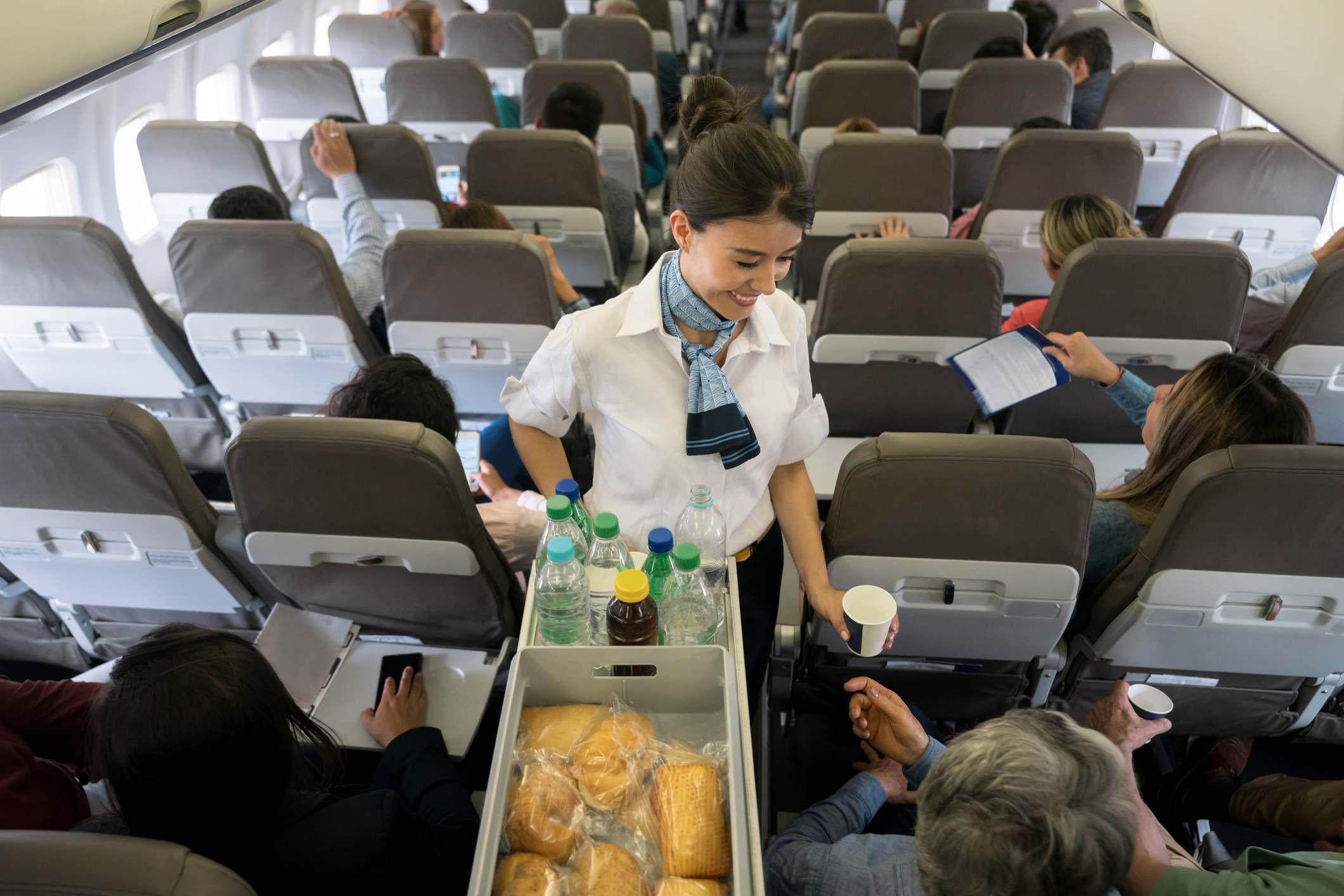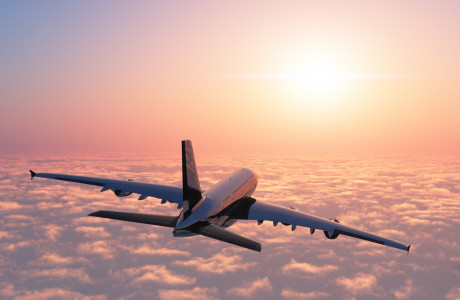
Flight Attendants - This Is What The Job Is Like
The vacation is booked and the anticipation is rising. When the time comes, it's time to pack your bags and head to the airport. Once you're on the plane, you can hardly wait for it to start. While many are now dreaming of the upcoming vacation, elsewhere it is: What does my duty schedule look like? Where will I spend the next stopovers? We are talking here about flight attendants. Without them, the plane would not be able to take off. But what exactly are their duties? Is it called stewardess or flight attendant? What are the requirements to become a stewardess? What are the benefits of the job and what challenges do flight attendants have to overcome? We give you an overview.
Contents:
What Are Stewards and Stewardesses or Flight Attendants?
All terms equally refer to the cabin crew of a commercial aircraft. However, the terms "stewardess" or even "steward" are now obsolete. Therefore, only flight attendants will be referred to in the following. The world's first flight attendant was the German Heinrich Kubis in 1912. In the following years, too, only male flight attendants practiced this profession. It was not until the 1940s that the first female flight attendants came on board - and they did so in the capacity of nurses. The ulterior motive was that nurses would have a calming effect on the guests and they could thus reduce their fear of flying. From the late 1940s, it became more common for a mixed cabin crew to look after passengers. And today, it's hard to imagine an airplane without them.

Flight Attendants: Requirements and Training
In the actual sense, flight attendant or flight attendant is not a recognized training profession, because each airline trains its own on-board staff. The demanding "training course" usually lasts between six and twelve weeks and requires a high level of commitment as well as stamina. During this time, the prospective flight attendants learn, among other things, the layout of the aircraft, how to put on safety equipment on board, what needs to be observed when making loudspeaker announcements, as well as everything important about emergency training and first aid courses. In addition, training for the service around the guests may not be missing. After successful completion, the graduates receive a certificate.
These are important prerequisites for becoming a flight attendant:
At least a good high school diploma, with vocational training in the service sector promising increased opportunities
Fluency in at least English, further knowledge in e.g. French and Spanish is welcome
Minimum age between 18 and 21 years, which depends on the airline in question
Minimum height of around 1.60 m, as there are no problems operating the on-board equipment, and a maximum height of around 1.90 m (depending on the airline in question)
High physical resilience and fitness, as flight attendants have to stand and walk a lot, as well as sometimes lift heavy pieces of luggage
Well-groomed appearance, whereby external conspicuous features such as tattoos, piercings and brightly colored hair are rather unwelcome (as a rule, these should be coverable)
Personal strengths such as contact and team skills, service-oriented work, ability to work under pressure as well as flexibility

This is What the Everyday Life of a Flight Attendant Looks Like
The daily routine of flight attendants often starts early and ends very late - shift and night duties as well as assignments on weekends are also not uncommon. The length of a working day can vary greatly: Flight attendants on long-haul flights, for example, have a long shift, but then between 24 and 48 hours off after a leg. During this period, also called layover, flight attendants can use this time for themselves. As layovers are made all over the world, there is an opportunity for exploration and relaxation. The prerequisite here, of course, is that jet lag doesn't get to you too much. Flight attendants on short-haul routes fly back and forth all day. Once they have reached a destination and take off again shortly afterwards, this is called a "turnaround". After a few days on duty, four days off then await.
These tasks are due before a flight:
Discuss upcoming weather conditions and any turbulence that may occur
Safety briefing with the entire crew
Checking emergency equipment (Is there enough equipment on board? Is it in good working order?)
Checking the cabin for unusual odors and objects
Inform passengers of safety and emergency regulations
Ensure that seats are in the upright position, window coverings are up, seat belts are fastened, and carry-on baggage is securely stowed
These are the tasks at hand during a flight:
Providing services, such as distributing drinks and food on the plane and selling products from the in-flight store
Ensuring that the cabin is orderly and tidy
Ensuring that passengers behave calmly during turbulence and giving instructions
Provide first aid in case of e.g. nosebleeds, nausea, minor injuries or frightened passengers
These tasks are due after a flight:
Saying goodbye to each passenger
Cleaning up the cabin
Preparing for the next flight
What Advantages Do Flight Attendants Have from Their Job?
Dream job flight attendant or flight attendant - but what makes this job special? What's obvious here is traveling all over the world. Especially for flight attendants on long-haul flights, there is often enough time to explore the cities flown to for a day or two. Even if there should be a private trip, there is the possibility of standby flying as well as discounted flights, hotel rooms or rental cars. In addition, it can be said that in this profession, variety and new people, whether in the crew or as passengers, are constantly waiting for you.
Challenges and stresses for flight attendants
Even though there is a lot of talk about a dream job where you can travel the world, the job as a flight attendant also comes with some challenges:
Little time at home, which can make family life difficult
Stress due to time and climate differences
No entitlement to weekends and holidays off
Possibly exhausting passengers
Want to learn more interesting facts about the crew on board? Then we recommend you read the article about pilot lingo and aviation alphabet. Ready for Departure?



